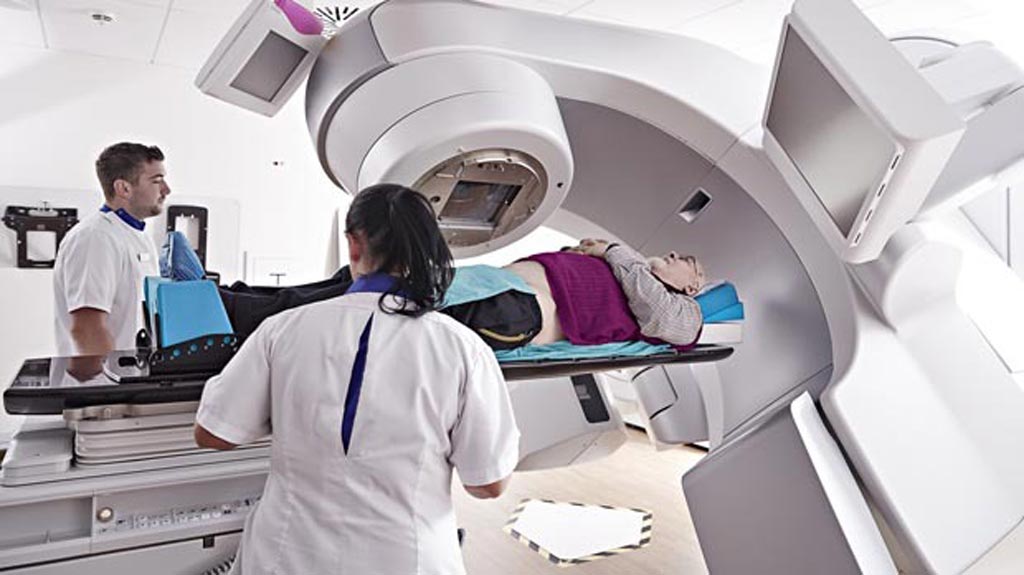Higher Radiation Dose Yields No Survival Benefit in Prostate Cancer
By MedImaging International staff writers
Posted on 28 Mar 2018
A new study reveals that while radiation therapy (RT) dose escalation does not improve overall survival (OS), it does reduce the need for secondary therapies.Posted on 28 Mar 2018
Researchers at Cedars-Sinai Medical Center (Los Angeles, CA, USA), Washington University in St. Louis (WUSTL; MO, USA), and other institutions conducted a study involving 1,532 patients from 104 Radiation Therapy Oncology Group institutions to determine if RT dose escalation from 70.2 Gy (in 39 fractions) to 79.2 Gy (in 44 fractions) would improve OS--measured from randomization to death due to any cause--and other outcomes in prostate cancer.

Image: A new study shows higher doses of radiation hold no benefit for treating prostate cancer (Photo courtesy of Cancer Research UK).
The results revealed that of the 748 men receiving standard treatment, 75% were still alive after eight years of follow-up; of the 751 men receiving the dose-escalation treatment, 76% were alive at the eight-year mark. Over the course of the study, 51 patients (3.4%) died of prostate cancer. While there was no difference in OS numbers, patients in the standard dose group were more likely to undergo additional therapies for tumor growth or metastasis, while those in the escalating dose group experienced more side effects, such as urinary irritation or rectal bleeding. The study was published on March 15, 2018, in JAMA Oncology.
“If we can safely deliver the higher dose of radiation, my opinion is to do that. It does show lower risk of recurrence, which results in better quality of life. But if we can't achieve those 'safe' radiation dose goals, we shouldn't put the patient at risk of serious side effects down the line by giving the higher dose,” said lead author Jeff Michalski, MD, MBA, of WUSTL. “If we can't spare the rectum or the bladder well enough, for example, we should probably back off the radiation dose. It's important to develop treatment plans for each patient on a case-by-case basis.”
“During the 10 years it took to enroll enough patients in the trial, at least six new therapies were approved for recurrent or metastatic prostate cancer, and these therapies have been shown to improve survival,” concluded Dr. Michalski. “It is possible the patients in the standard treatment arm, who were shown to need more follow-up therapies, would not have done as well as the group receiving the escalating dose, had these new therapies not become available.”
Prostate cancer is the most common cancer among American men, with approximately one million patients undergoing RT annually. A recent large observational study by researchers at Karolinska University Hospital (Stockholm, Sweden) comparing options for treating prostate cancer concluded that surgery offers superior OS benefit than RT for men with localized prostate cancer.
Related Links:
Cedars-Sinai Medical Center
Washington University in St. Louis
Karolinska University Hospital














